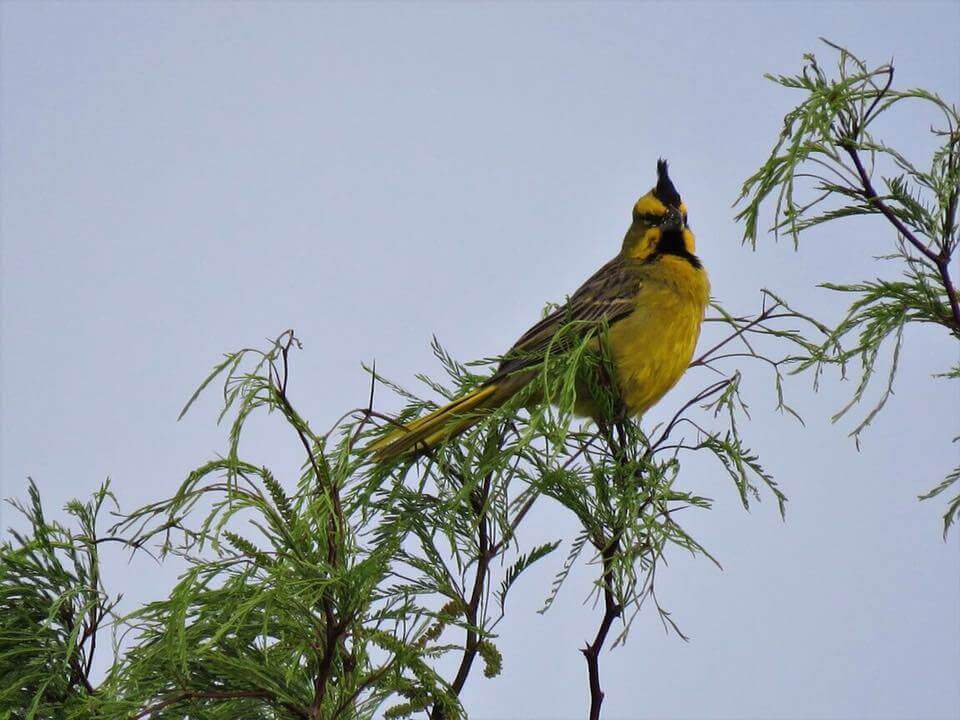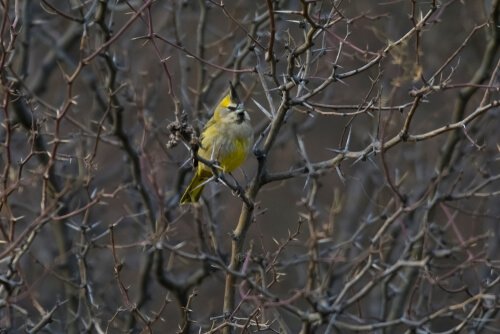Yellow cardinal, a sweet and melodious song
All the problems of the yellow cardinal are due to its beautiful song and eye-catching color , which makes it one of the most sought after and sought-after cage birds among lovers of this type of practice, although today it is illegal.
The number of copies has only decreased in recent decades, which has put this little bird on the ropes , until consider it a species in real danger. Seeing them in freedom is quite a spectacle, but it is becoming more and more complicated to enjoy them.
Stylish and presumptuous
The charms of the yellow cardinal are much more than a sweet and melodious song. Its 20 centimeters in length make it, unfortunately, an ideal bird to display in a cage and one of the most sought after in this world.
The plumage of the males It is yellow with a certain greenish touch and blackish brushstrokes, but what is most striking about its look is its striking black crest . The females, as in most birds, are less alive than the males, with shades of gray and black, although of a similar size and the same strong peak with a conical shape.
The Crest feature lifts or lowers it according to your mood, and also uses it to woo the females. While flying, it keeps it in a low position to improve aerodynamics, in the same way as when flying. feel threatened; it is a clear indicator of your mood.

Habitat of the cardinal yellow
Until a few decades ago it was easy to find the yellow cardinal through large areas of Brazil, Uruguay, Paraguay and Argentina , but with the catches massive uncontrolled population has been reduced to small areas of southern Brazil, northern Argentina and part of Uruguay.
The areas that most like this small bird are the open forests and savannas. His tireless search for food makes him venture to settle much on the ground, although the most common is to find it perched in trees and shrubs, always alert in search of something to take to the stomach.
Feeding and reproduction
Although they have a very varied diet, most of their diet is made up of seeds, insects and larvae. It is a very opportunistic bird, like the Most small birds, and often go to areas of roads and parks to get food, but no one is upset, as it brightens any moment with its melodious singing.

The yellow cardinal covers large areas to look for food and is in continuous movement, with a vivacity that makes him suffer a lot when he is captured ; it is not a bird that can tolerate life very well in a cage.
For the reproduction of the cardinal to be carried out successfully, it needs tranquility and adequate environmental conditions. If everything fits, the female will put two to four pretty greenish-striped eggs with black specks.
Future of the yellow cardinal
The pesticides and the increase of areas of culture in the places where they used to accommodate their nests have also made a dent in the population of this peculiar species.


